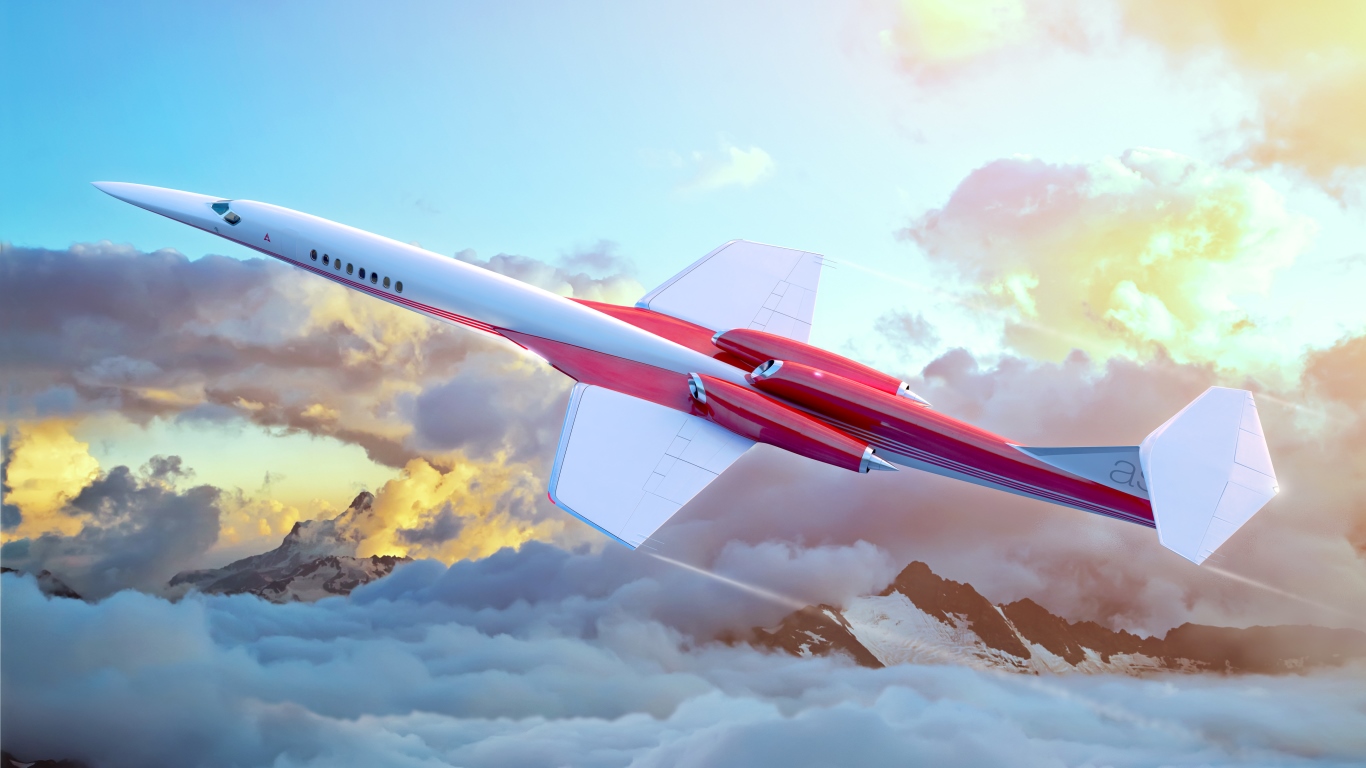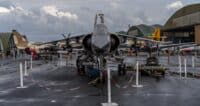

The last commercial supersonic flight occurred in 2003 when the Concorde made its final landing in the United Kingdom. Rising fuel costs and a crash near Paris that killed 109 passengers and crew plus four people on the ground finally ended the Concorde’s useful life.
In the more than 15 years since that final flight, no commercial jet flies at even half the Concorde’s top speed of roughly 1,350 mph. That doesn’t mean aircraft engineers have given up on supersonic flight, however.
On Tuesday, Boeing Co. (NYSE: BA) announced a “significant” investment in Nevada-based Aerion, which was founded in 2003 to develop new technologies for supersonic aircraft. The company introduced its first supersonic design, the AS2 12-passenger business jet, in 2014. In 2015, Aerion announced a firm order for 20 of the new planes from Flexjet, a lessor of private aircraft. The first AS2 flight is not scheduled until 2023 and commercial availability could be years beyond that.
While a commercial supersonic aircraft could make Aerion or one of its two competitors rich and happy, the prospect of supersonic air travel is not welcomed by all. Last week, the International Council on Clean Transportation (ICCT) published a working paper on the environmental impacts of supersonic transport (SST) aircraft. Sonic booms and increased carbon dioxide emissions were the focus of the ICCT’s study.
The ICCT study modeled the landing and takeoff noise, sonic boom and carbon dioxide emissions from a new, “unconstrained” fleet of 2,000 SSTs linking 500 city pairs by 2035. The two busiest airports would be Dubai and London Heathrow, both of which could see more than 300 take and landing operations every day. Los Angeles, Singapore, San Francisco, JFK, Frankfurt and Bangkok could see 100 operations a day. That much activity could double the area around the airports exposed to noise pollution compared to a subsonic fleet of the same size.
That SST fleet would emit an estimated 96 million metric tons of carbon dioxide per year, roughly the combined 2017 emissions of American, Delta and Southwest Airlines. The fleet would consume about 20% of the entire carbon budget available to commercial aviation under a climate goal of limiting a global temperature increase of 1.5 degrees Celsius.
Last October, Aerion selected a new engine from General Electric Aviation called the Affinity to power the AS2. The turbofan Affinity has been designed for efficient supersonic flight over water and efficient subsonic flight over land. The engine is also designed to beat current emission standards and will have a top speed of Mach 1.4 (about 1,100 mph).
Aerion CEO Tom Vice said:
The AS2 is the launch point for the future of regulatory-compliant and efficient supersonic flight. Together with Boeing, we’re creating a faster, more connected future with tremendous possibilities for enhancing humanity’s productivity and potential.
Airbus signed on as Aerion’s airframe technical partner in 2014, and it is unknown whether the Boeing rival’s deal is still on or not. Odds are that it isn’t, but we don’t know for sure.
One final thing: price. At the time the AS2 was introduced in 2014, the 12-seater’s cost was projected to top $100 million per copy. For comparison, Boeing’s 787-800 has a list price of $102.2 million, carries up to 210 passengers, and has a subsonic cruising speed of around 585 mph. The Airbus A320neo costs $110.6 million, has a maximum capacity of around 186, and a cruising speed of about 530 mph. The Aerion AS2 will cost more than $100 million, carry a maximum of 12 passengers, and have a maximum cruising speed of around 1,100 mph.
Take This Retirement Quiz To Get Matched With An Advisor Now (Sponsored)
Are you ready for retirement? Planning for retirement can be overwhelming, that’s why it could be a good idea to speak to a fiduciary financial advisor about your goals today.
Start by taking this retirement quiz right here from SmartAsset that will match you with up to 3 financial advisors that serve your area and beyond in 5 minutes. Smart Asset is now matching over 50,000 people a month.
Click here now to get started.
Thank you for reading! Have some feedback for us?
Contact the 24/7 Wall St. editorial team.

